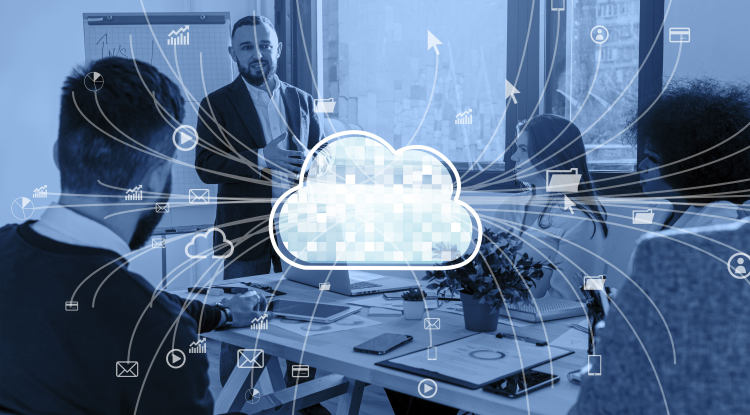- HCM
Managing a growing workforce in today's complex business landscape presents both challenges and opportunities. The role of HR has evolved, and with it, the tools and strategies employed. No longer limited to traditional management tasks, HR now stands at the intersection of people and technology. The modern HR professional recognizes the imperative of leveraging advanced tools, particularly cloud based HRMS solutions, to streamline and elevate their processes.
This isn't just a trend; it's a transformation. A recent PwC HR technology survey underscores this shift, revealing that a significant number of HR leaders believe their technology investments, especially the transition to the cloud, are yielding positive results. Yet, as with any transformation, there are lessons to be learned. The survey also points to potential missed opportunities in maximizing technology adoption and addressing early-stage challenges in cloud integration.
Here are the 5 Practical tips that will streamline HR processes with the help of an HRMS Cloud
This section provides a brief snapshot of the key tips to leverage HRMS Cloud for efficient HR operations.
1. Unified Database: Instead of having employee data scattered across multiple systems or files, HRMS cloud solutions allow for a centralized database, ensuring easy access and updates.
- Real-time Updates:Cloud systems automatically update data in real time, ensuring everyone has access to the most recent information.
- Security: Utilize robust encryption and multi-factor authentication to protect sensitive employee data.
2. Automate Repetitive Tasks
- Onboarding: Implement automated workflows for tasks like sending welcome emails, generating contracts, and setting up IT access for new hires.
- Leave Applications & Approvals: Allow employees to apply for leaves online, and managers to approve or decline through the system itself. Automatic email notifications can keep all parties informed.
- Payroll Processing: Automate payroll calculations and ensure compliance with the latest tax codes.
3. Integrate with Other Systems
- APIs & Integration Tools: Ensure your HRMS can integrate with other software used in the company, like accounting software, enterprise resource planning (ERP) systems, or communication tools. This provides a seamless flow of information across platforms.
- Single Sign-On (SSO): Using SSO can simplify the login process, reducing the need for multiple usernames and passwords.
4. Self-service Portals
- Empower Employees: Allow employees to update their personal information, apply for leaves, view their payroll slips, and access training resources through a self-service portal.
- Reduce HR Workload: By enabling employees and managers to perform tasks on their own, the HR department can free up time to focus on strategic initiatives.
5. Regularly Review & Optimize
- Feedback Loops: Regularly collect feedback from HR staff, managers, and employees about their experience with the HRMS. Use this feedback to make iterative improvements.
- Stay Updated: Ensure that your cloud HRMS is regularly updated to benefit from the latest features and security enhancements.
- Training: Continually train HR staff and other users on best practices and new functionalities of the system. This ensures that everyone is using the system to its fullest potential.
For those interested in a comprehensive understanding, the following sections delve deeper into each of the five practical steps, highlighting their significance, benefits, and implementation strategies.
1. The Need for Centralized Data Storage
- The Problem with Scattered Data:
Fragmented employee data isn't just an HR problem; it's an organizational challenge. Multiple data points stored in different systems can lead to inconsistency, errors, and inefficiency. For instance, retrieving simple data like employee leave balance can become a tedious task if data is dispersed.
- Benefits of a Unified Database:
A unified database ensures that all employee information is stored centrally. This guarantees quick access, easier updates, and seamless data management. It's akin to having a single source of truth, a repository where every piece of employee information resides and can be tapped into easily.
- The Role of Real-time Updates:
With HRMS cloud solutions, gone are the days of waiting. Data updates in real-time. Whether it's a new employee joining, a role change, or a salary update, everyone has access to the latest, accurate information.
- Security Considerations:
In a digital age, data breaches can be catastrophic. Fortunately, robust HRMS solutions emphasize data security. Leveraging strong encryption methods and multi-factor authentication, these cloud solutions ensure that sensitive employee information remains in safe hands.
2. The Power of Automation in HR
56% of companies using AI for HR are trying to automate repetitive tasks.
Source: Gartner
- The Tedious Nature of Manual Onboarding:
Traditional onboarding might have involved paperwork, manual entries, and a series of back-and-forth emails. But with automated systems, tasks like sending out welcome emails, contract generation, and even setting up IT accesses for new hires become seamless. Allowing for a smoother onboarding process.
- Streamlining Leave Applications & Approvals:
Imagine a world where applications don’t need paper forms. With HRMS cloud solutions, employees can apply for leaves online. Managers get instant notifications and can approve or decline them within the system. It’s efficient, paperless, and quick.
- Simplifying Payroll with Automation: Payroll isn’t just about counting days and disbursing salaries. It involves adhering to tax regulations, accounting for leaves, bonuses, and more. Automating this ensures not just speed, but also compliance and accuracy, making it a win-win for both HR and the employees.
3. Integration:
The Key to a Seamless Workflow:
In today's interconnected business environment, having isolated systems can be a barrier to efficiency and productivity. The need for immediate access to real-time data across various departments is paramount for informed decision-making. This is where the role of integrated HR solutions comes to the forefront.
- Why Integration Matters:
Having standalone systems can result in data inconsistencies, redundancies, and inefficiencies. For instance, if the finance team is using one system and HR another, any change in employee data needs to be updated in both, leading to potential errors. Integration ensures that data flows seamlessly across all systems, ensuring that all departments work with consistent and updated information. It's no surprise that solutions for HR challenges emphasize the need for integrated platforms.
- The Role of APIs & Integration Tools:
APIs (Application Programming Interfaces) and integration tools enable different software to communicate with each other, ensuring a cohesive flow of information. This not only provides a unified view but also accelerates processes. For instance, by integrating HRMS with enterprise resource planning (ERP) systems, businesses can gain insights into HR expenses in real-time, aiding in better budgeting and forecasting.
- The Ease of Single Sign-On:
While multiple systems are often necessary for varied business functions, having separate logins for each can be cumbersome and a security concern. Single Sign-On (SSO) solutions simplify the login process, enabling employees to access multiple systems using a single set of credentials. Plus, as outlined in this article on employee experience management software an integrated system can significantly elevate the employee's experience.
4. Empowering Employees with Self-service Portals:
The shift from traditional HR practices to modern, tech-enabled strategies is evident. At the heart of this transformation is the focus on empowering employees.
- The Shift to Employee Empowerment:
In the past, HR departments served as gatekeepers of information and processes. Today, with the rise of HR software, there's an increasing emphasis on giving power back to the employees. This approach not only fosters trust and engagement but also makes processes more efficient.
- Benefits of a Self-service Portal:
Self-service portals, a prominent feature of HR management software, have multiple benefits:
- Updating Personal Info:
Employees can easily update their contact details, ensuring that HR records are always current.
- Accessing Pay slips:
With advanced HR solutions, employees can view and download their payroll slips anytime.
- Leave Applications:
The tedious paper-based leave application process is now a thing of the past. Employees can apply online, and managers get instant notifications, making the approval process quicker.
- Reducing HR Workload:
A significant advantage of self-service portals is the reduction in HR's administrative tasks. With employees and managers handling many tasks independently, HR professionals can reallocate their time to more strategic initiatives. This not only enhances efficiency but also contributes to a better employee experience.
5. The Importance of Regular Reviews and Optimization:
Technology and business needs are ever evolving. To ensure that the HRMS remains effective and aligned with organizational goals, regular reviews and optimization are crucial.
Why Iterative Improvements Matter
No system is perfect from day one. Over time, as employees use the HRMS and the business environment changes, there will be areas of improvement. Iterative improvements ensure that the system grows and adapts with the organization, offering sustained value.
The Role of Feedback Loops
Feedback is invaluable. By creating channels for employees, managers, and HR staff to provide feedback on the HRMS, businesses can gather actionable insights. Whether it's a feature request or identifying a bug, feedback loops ensure that the system remains responsive to user needs.
Staying Updated & Continuous Training
Technological advancements are a constant. Ensuring that the HRMS is updated regularly guarantees access to the latest features and security enhancements. Moreover, continuous training sessions for staff, as highlighted in this insightful cloud based hr software guide, ensure everyone is maximizing the system's capabilities.
Investing in HRMS for Business Growth
The ever-evolving corporate landscape demands innovative solutions to navigate the complexities of human resource management. Modern HRMS solutions offer a comprehensive approach to managing the most vital asset of any organization: its people. As we have delved into, from data-driven decision-making to the empowerment of employees through self-service portals, HRMS is pivotal for businesses aiming for growth and efficiency.
Futureproofing with HRMS
As technology continues to permeate every aspect of business, adopting a robust HRMS isn't merely an option—it's a necessity. Organizations that proactively adapt, integrate, and optimize their HR solutions stand poised to thrive in an era of digital transformation.
Be Proactive
For businesses on the fence about implementing or upgrading their HRMS, the message is clear: be proactive. The sooner organizations harness the myriad benefits of a modern HRMS, the quicker they'll realize enhanced productivity, greater employee satisfaction, and a sharper competitive edge.
As we've explored the intricacies of streamlining HR processes through an HRMS Cloud, it's evident that the right technology plays an indispensable role in making HR operations smooth and efficient. Speaking of which, HONO stands out as an exemplar in this domain. With its innovative HR solutions and state-of-the-art features of HR management software, HONO is truly a game-changer.
If you're keen to explore how HONO can be the catalyst in optimizing your HR processes, why not see it in action? Book a demo with our experts today, and experience firsthand the transformative power of a leading HRMS Cloud solution.
Request a Demo Now!
Our Latest Resources
Frequently Asked Questions
The return on investment (ROI) varies by organization, but factors include improved productivity, reduced administrative costs, and enhanced decision-making. Many businesses see a significant ROI within the first year of implementation.
While any system transition can have its challenges, most modern HRMS solutions are designed for smooth implementation. Providers often offer training and support to ensure a seamless transition.
Security is a top priority for HRMS providers. Data is typically encrypted, and robust security protocols are in place to prevent breaches. Regular updates further ensure data protection.
Absolutely! While larger organizations may have more complex HR needs, small businesses can benefit from streamlined processes, reduced manual tasks, and data-driven insights offered by HRMS.
It's advisable to conduct a review at least annually. However, feedback loops should be continuous, allowing for iterative improvements throughout the year.

.png?width=50&height=50&name=Team%20HONO%20logo-01%20(1).png)



